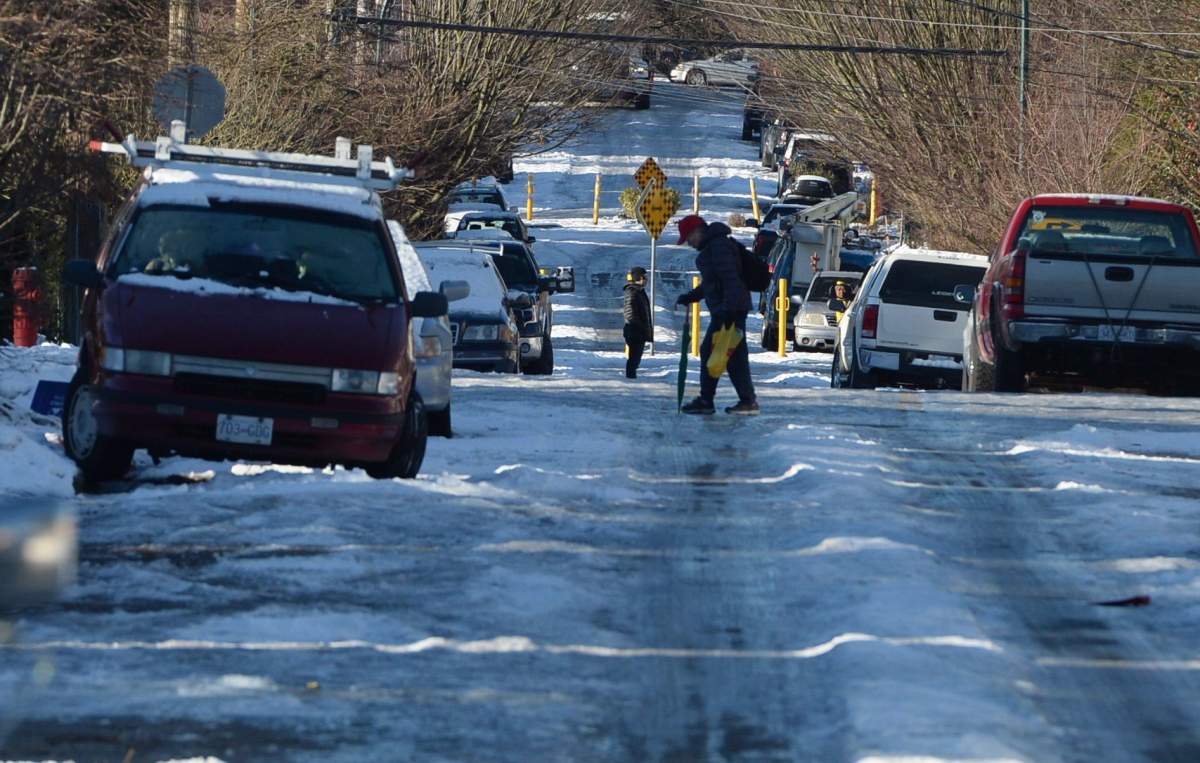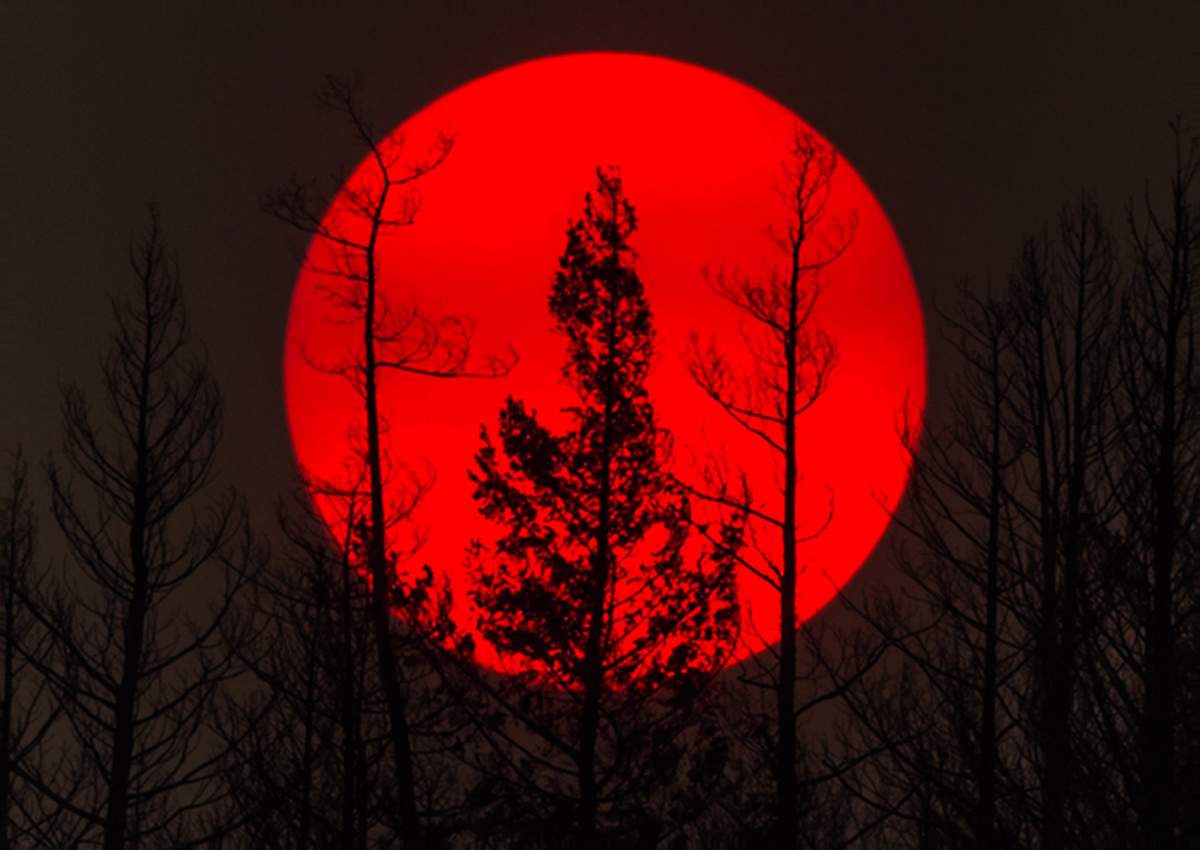B.C.’s 2017 weather story was one of extremes.

Winter brought heavy snowfall, icy roads and salt hoarding in Vancouver.
Summer brought sunny weather, but also a record-breaking heat wave and smoky air.
And that was largely thanks to a bevy of wildfires burning around the province.
The extreme conditions provided no end of stories to tell about the weather this year.
Here we reflect on what was, for much of 2017, a story of ice and fire.
Jan. 2: Vancouver residents play hockey on city streets

Who needs a rink when you can play hockey right outside your front door?
The street near Vancouver’s John Oliver Secondary School at St. George Street and East 41st Avenue was iced up enough that kids were able to strap on skates and play some shinny — not the most common sight in a city with typically mild winters.
Jan. 5: For the 1st time in 20 years, Vancouver residents can skate on Trout Lake

The year was 1996. “Macarena” was on the radio, puffy vests were in style and Will Smith was king of the box office in Independence Day.
It was also the last time that Vancouver’s Trout Lake had frozen over enough to allow skating.
But the dry (or wet) spell ended in 2017, when the Vancouver Park Board determined that, with 12 centimetres of solid ice, the lake was thick enough to skate upon.
Families relished the opportunity to put skates to ice they hadn’t touched in decades.

Get breaking National news
Jan. 5: Mayhem at Vancouver fire halls as residents break the line for the free salt

The City of Vancouver’s salt giveaway turned into a scene out of Lord of the Flies as people stepped out of line and started rushing the piles amid snow and frigid temperatures.
Global BC’s Jordan Armstrong reported that the salt pile had vanished in five minutes.
People had lined up for salt since 6 a.m., and police were called to two fire halls when tempers started to flare.
Jan. 6: Rich Shaughnessy homeowners fail to shovel their snow

City of Vancouver bylaws state that homeowners have to shovel the snow from sidewalks in front of their properties.
Tell that to a number of homeowners in Vancouver’s tony Shaughnessy neighbourhood, where as many as half the sidewalks weren’t cleared in early January.
Some residents that Global News spoke to said it was too much work to clear the snow. Others said they were “too busy.”
Jan. 9: Dashcam footage shows perils of winter driving on Highway 1 through Fraser Canyon

Driving was tough in Vancouver last winter.
But dashcam footage from a commercial trucker on Highway 1 in the Fraser Canyon showed just how bad conditions can get in other parts of B.C.
As Clayton Brown drove by on a morning in January, he spotted a skidding fuel truck, a semi stuck on the side of the road and various broken down vehicles along the way.
Jan. 12: PHOTOS: It’s so cold in Vancouver ice is floating down the Fraser River

With temperatures falling to as low as -10 degrees Celsius on B.C.’s South Coast, frozen floes were seen floating down the Fraser River.
The river used to freeze over in the early 20th century, but this was very new for people who weren’t around back then.
May 1: Rain, rain go away: fourth-wettest April on record for Metro Vancouver

April 2017 was Metro Vancouver’s fourth-rainiest on record.
And that was good news, given predictions that it would be the wettest ever.
April had 21 days of rain, six more than the average for the month, according to Global BC meteorologist Mark Madryga.
At 134 millimetres, the month still trailed the rainiest-ever, which came in 1996 with 172 millimetres, as well as 1983 and 2003.
So snow wasn’t the only extreme that Metro Vancouverites experienced this year.
Aug. 3: B.C.’s heat wave is breaking maximum temperature records that have stood for over 100 years: report

Baking hot summer temperatures broke records all over the province in August.
In Agassiz, the temperature hit 35.6 degrees Celsius, on Aug. 2, beating a same-day temperature record of 34.4 degrees that had been set in 1898.
Chilliwack also saw a sweltering hot temperature of 35.6 degrees Celsius on Aug. 2, beating a record of 32.8 degrees that was set in 1927.
Sept. 8: Vancouver’s smoky haze is dragging down the scenery, and you. Here’s how.

Metro Vancouver spent much of the summer under a cloud of smoke as wildfires raged around the province.
A haze persisted for weeks, forcing authorities to advise people to avoid strenuous exercise outdoors.
The smoke left people feeling a little down — and doctors said this is because the fine particles that came with haze can enter the brain and lead to “neuro-inflammation,” affecting one’s mood and their cognitive abilities.
So if you were feeling a little gloomy through August and September, you weren’t just imagining things.
Oct. 19: Vancouver floods with rain from a ‘river in the sky’

Snow, smoke and finally flooding.
Metro Vancouver faced a trifecta of extreme weather in 2017, and it was capped off by a storm that felled trees and left cars driving in bumper-high water.
October’s intense rains came from what’s known as an “atmospheric river,” a long system that transports water vapour outside the tropics, said the U.S. National Oceanic and Atmospheric Administration.
This particular “river in the sky” was 8,000 kilometres long.











Comments